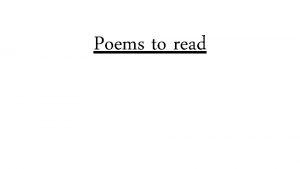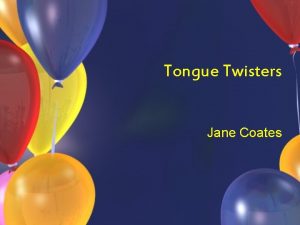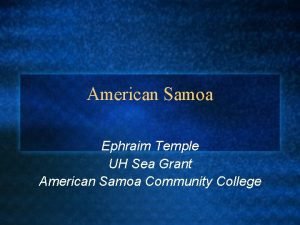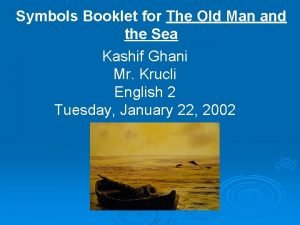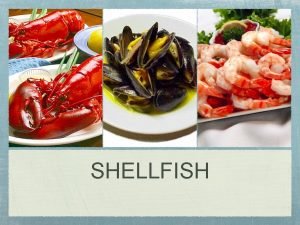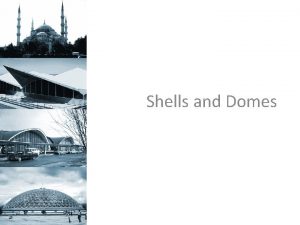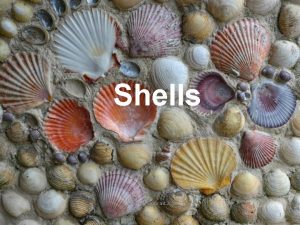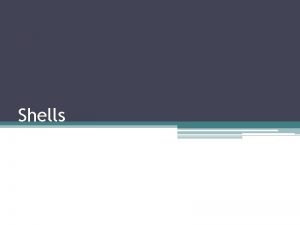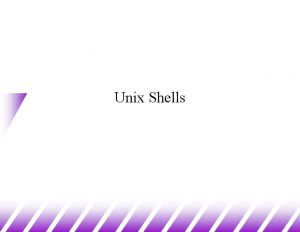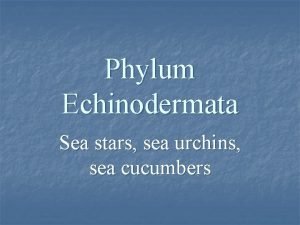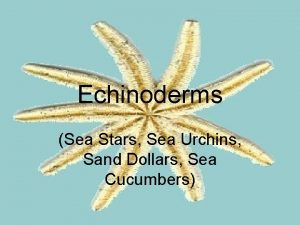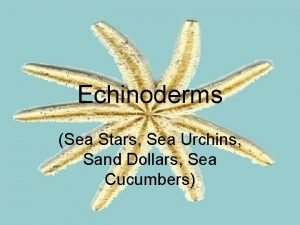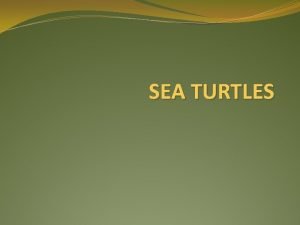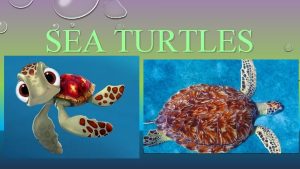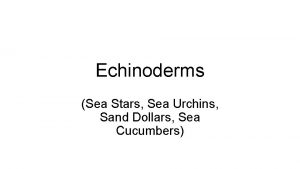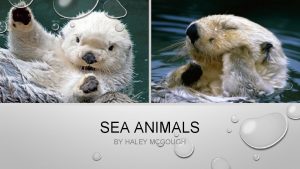Shells Louisana Sea Grant 2015 1 What are












- Slides: 12

Shells Louisana Sea. Grant 2015 1

What are Shells? • What types of animals have shells? • Shells are hard protective coverings worn on the outside of some animal’s bodies. • Think about what shells are made of. Turn to your shoulder partner and discuss what you think makes up a shell. • Some animals have no bones, they care called invertebrates. • Many invertebrates live inside of their shells. These shells are called exoskeletons. Louisiana Sea Grant 2015 2

Mollusks • Mollusks are invertebrates found in or near water, like marshes, rivers, lakes and oceans. • Examples of mollusks are snails, mussels, squids , and octopus. • We will learn about mollusks with shells! Louisana Sea. Grant 2015 3

Univalve (or Gastropod) Mollusks • What do you think a univalve mollusk is? Think about the prefix “uni”…. . You and your partner discuss what type of mollusk would be a univalve. • univalve mollusk shell can take on many shapes: small ice cream cone, coiled like a spiral, or a small slipper. Louisana Sea. Grant 2015 4

Univalve Mollusks • Univalves include periwinkles, snails, abalone and conch. • To eat they must come part way out of its shell. If a predator comes near the gastropod animal it will quickly retreat back into its shell for protection. Louisana Sea. Grant 2015 5

Bivalve Mollusks • What do you think a bivalve mollusk is? Think about the prefix “bi”…. . You and your partner discuss what type of mollusk would be a bivalve. • If a univalve mollusk has one shell a bivalve mollusk must have_____ shells! • The shells are hinged together. • Bivalves can be found in fresh water, like lakes and rives, or in saltwater, like the ocean Louisana Sea. Grant 2015 6

Bivalve Mollusks • Bivalve shells are usually round or oval, but some can be shaped like a fan. • Clams, oysters, and scallops are bivalves • A bivalve mollusk gets its food by opening its two shells to pump in water. They filter out and eat tiny plants and animals in the water. Louisana Sea. Grant 2015 7

Periwinkle Snail Shell • Univalve or Bivalve mollusk? • very small, and can be found clinging to a blade of marsh grass in coastal marshes. • attach to docks and wooden pilings in bays and on shorelines. • close themselves into their shells using their tail to keep from drying out or protect themselves from predators. Louisana Sea. Grant 2015 8

Mussels • Mussel shells are most common in creeks, ponds. and marshes in Louisiana. • Many mussels are edible • They have oval shells that may be light brown, purple or rose in color. • These features have made freshwater mussels popular among collectors since the early 19 th century. Louisana Sea. Grant 2015 9

Oysters • Found in shallow saltwater, such as estuaries and bays • Shells are oval or pear-shaped • Light grey on the outside and very rough to touch. • Oysters are edible, and are high in calcium, iron, and protein. Louisana Sea. Grant 2015 10

Rangia Clam • Rangia clam can live in areas with some saltwater, but prefer fresher water, like those in rivers or Lake Ponchatrain. • Early peoples along coastal used them as a food source for, but the meat is not very nutritious. • Indigenous people discarded shells along the waterways, now called “middens” • Scientists researched the use of the rangia clam in BP oil spill clean up efforts • Rangia clams have been harvested for construction and road fill. Louisana Sea. Grant 2015 11

Shell Match Activity • Use your shell booklet to help you match the pictures of the shells with their descriptions. • Record your answers on your recording sheet. Louisana Sea. Grant 2015 12
 Mikael ferm
Mikael ferm Poems about seashells
Poems about seashells Sea tongue twisters
Sea tongue twisters Ephraim temple
Ephraim temple Yellow sea and east china sea
Yellow sea and east china sea Hydra jellyfish
Hydra jellyfish What does the sea symbolize in the old man and the sea
What does the sea symbolize in the old man and the sea Ionian sea vs aegean sea
Ionian sea vs aegean sea Sea stack diagram
Sea stack diagram Shell method equation
Shell method equation Characteristics of fresh oyster
Characteristics of fresh oyster Type of structure
Type of structure Lab 7-7: shells, scripting, and data management
Lab 7-7: shells, scripting, and data management

